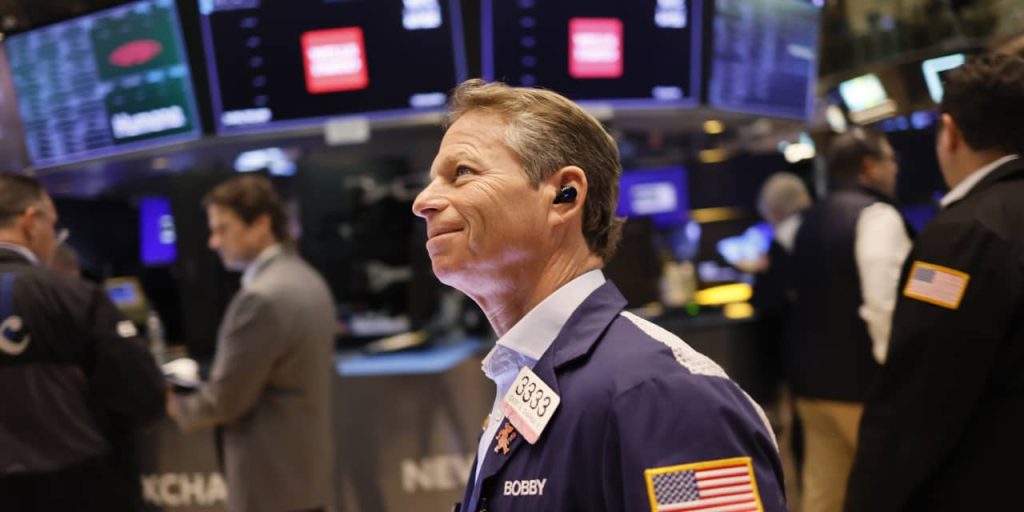With Thanksgiving only a day away, investors might already be counting their blessings—especially given the market’s run-up of the past few weeks. And if history is any guide, the rest of the year and the beginning of 2024 should be merry and bright as well.
Although all three indexes struggled on Tuesday, they really have had a banner November so far. On Friday, the
Nasdaq Composite
notched its largest three-week point gain ever on record, and while Silicon Valley has been propelling 2023’s rally, it wasn’t just that tech-heavy index that benefited.
The
S&P 500,
like the Nasdaq and the
Dow Jones Industrial Average,
has been up for three straight weeks through Friday’s close, rising 9.6% over that time. That is its largest three-week point and percentage gains since April and June 2020, respectively, when the market was rebounding from the initial shock of the spreading Covid-19 pandemic.
While the S&P 500 itself has had a great three-week run, plenty of the index’s components have done even better.
Nvidia
(ticker: NVDA), one of this year’s big tech stars, was up more than 23%. In addition
Expedia Group
(EXPE),
Generac Holdings
(GNRC),
Carnival
(CCL), and
Paramount Global
Class B shares (PARA) have all returned more than 30% since the market correction low on Oct. 27.
Those latest gains put the S&P 500 up 7.6% in November, and up more than 17% since the start of the year.
Of course, with the index already up so much, some may be skeptical of its ability to keep climbing, particularly at a time when high interest rates are acting as a headwind, particularly to highflying tech names.
However the S&P 500 has managed to keep the party going more often than not, according to Dow Jones Market Data.
Going back to 1962, there have been 39 other times that the S&P 500 delivered three-week percentage changes of 9% or more, excluding this most recent run. Following those past three-week surges, the index was still up on average over one-, two-, three-, four- and eight-week periods. In fact, the gains, seem to rise as time goes on; the index averages a 1.83% gain one month out, and a 3.91% gain after two months.
Nor is that thanks to a few outliers. Looking on a median basis is similarly cheery, as the index is similarly in the black over the one- two-, three-, four- and eight-week periods. The median gain four weeks out is 2.21%, and a figure that jumps to 3.3% of eight weeks.
Therefore, if historical patterns hold, the S&P 500 should have a jolly end to the year, and start of 2024.
But—there’s always a but—it is worth noting that the pattern hasn’t been as reliable in recent years. The last three times the S&P 500 jumped more than 9% in three weeks—twice in April 2020 and again in June that year—the results were a bit mixed. The index was in the red one week and one month out for the first and last of those periods; nonetheless, it was higher eight weeks later in all three of those instances.
All investors that do their due diligence know that past performance is no guarantee of future results, and there are naturally other factors at play that could impact the market. Nonetheless, in a year when bullish historical patterns have often played out, it’s a positive sign that the party isn’t over yet.
Write to Teresa Rivas at [email protected]
Read the full article here















